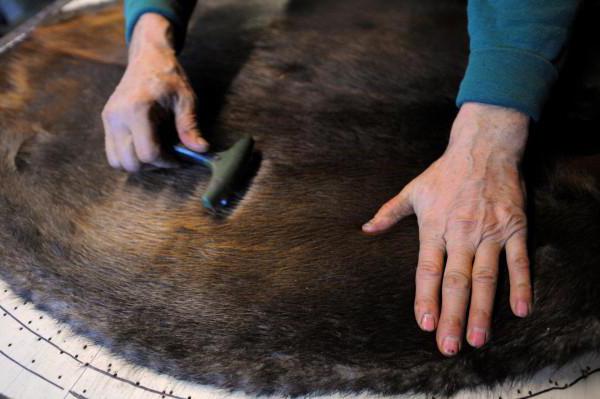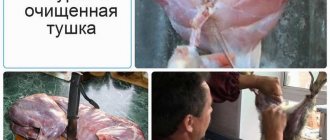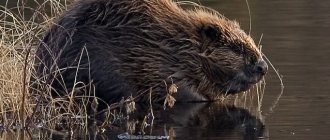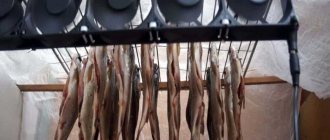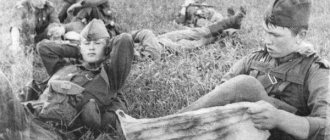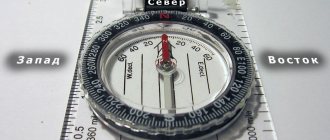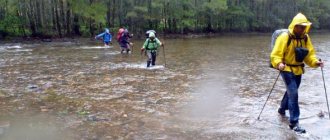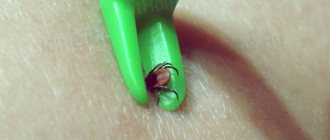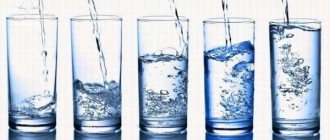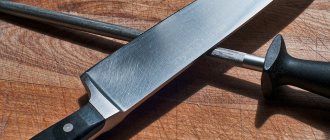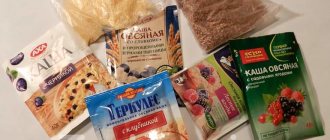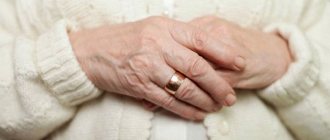- October 18, 2018
- Miscellaneous
- Natalia Penchkovskaya
Every successful hunter wants to have a trophy as a souvenir, which will be a reminder of days spent in nature. Experienced craftsmen can sew fur coats and hats from the skins of killed animals. If this is your first time deciding to cut and dry the skin, then you will find the expert advice collected in our article useful.
Curing beaver skins at home is a little different from working with other animals. This is explained by the presence in the withers of this animal of a large amount of hard fat, which serves as a protective shell for the beaver, and the flesh itself is quite difficult to clean off. Therefore, it is better to listen to the advice of experienced hunters and craftsmen who have experienced in practice a variety of methods of cleaning and dressing beaver skins, so as not to encounter problems with the formation of holes or tanning of the skin, as well as hair loss.
Quick preparation of hides in the forest
The ideal option for good quality skin would be to clean and cut it immediately after catching the animal. The hunter does not always succeed in this, but if you have found the time, then this method of preparing a beaver skin is just for you.
It is most convenient to remove the skin, starting with a cut on the animal’s belly, and immediately after its capture. In order not to damage the skin, you need to remove it carefully, that is, leaving a small layer of meat and subcutaneous fat. This process takes less time, and there is no risk of making a hole in it with a knife. Then they lay it out on a flat surface and cover it with salt for half a day. The purpose of this procedure is to draw out microorganisms, but in no case to dry them out. At the same time, the meat dries out slightly, and with further removal of the flesh it will be easier to cut off the inner layer.
At this stage of dressing the beaver skin, the main thing is to ensure that the flesh itself remains light. The appearance of dark spots indicates that the skin is beginning to dry out. Then fleshing cannot be done in order to avoid violating the integrity of the skin and the appearance of holes. If everything went well and you brought home a well-prepared beaver skin, then you can start scraping. If you realize that the hide is a little dry, you will have to add a soaking process, which you will need to be familiar with in advance.
How much does it cost to tan a beaver skin?
It is not always possible to process a hunting trophy yourself. Then people wonder how much it would cost to tan a beaver skin. The price for this service varies depending on the size of the animal. So, if the beaver is large, you will have to pay about 1,400 rubles, and if it is small, then 900 rubles.
Skinning an animal costs approximately 1,500 rubles, and cutting the tanned skin costs 200 rubles.
By the way, remember that for improper preparation of skins, which led to the appearance of cuts, holes or rotten areas on them, some studios charge the customer a premium of up to 15% of the order amount.
What seems more convenient - to try to do all the stages of dressing yourself or to pay money to specialists for it, only you can decide. But whatever this choice, we wish you good luck!
Similar articles:
- Asymmetrical loop for feeder Fishing using feeder gear is gaining more and more popularity. Its high efficiency compared to traditional fishing devices allows you to catch a catch even where…
- “Cool Place” (Losiny Ostrov, Moscow): photos and reviews “Cool Place” (Losiny Ostrov) fully lives up to its name, since spending time here is really pleasant and interesting. Paid entrance. We will learn about this place further. ABOUT…
- Fishing in the Oryol region: the best places to relax Fishing in the Oryol region is very interesting and exciting. Most local residents do not at all strive for paid reservoirs. They love the breadth and beauty of the local...
- Characteristics of the Stels Navigator 530 mountain bike Sometimes you just want to ride a bike with your family, doing it leisurely, in a relaxed manner, and discuss some business during the trip. AND…
- How to choose an air rifle? Airguns. Characteristics, photos Nowadays, pneumatic weapons from different countries and companies are presented in the windows and catalogs of specialized weapons stores. It has different purposes: for teaching and...
- Son of Cristiano Ronaldo. Who is raising the boy? Cristiano Ronaldo is one of the most famous personalities in the world of football. It is not only his sporting successes that attract attention, but also his personal life. Bright...
- Ivan Emelianenko: biography. Best Fights Not much information is available about the younger brother of legendary Russian boxer Fedor Emelianenko. It is a well-known fact that Ivan Emelianenko does not want to follow…
How to soak a skin
You should consider how to tan a beaver skin if the first stage was not as successful as the hunter would have liked. It is correct to carry out the fresh work, that is, after two hours, carry out the fleshing, salting and pulling on the rule for drying. The faster the work goes, the better the quality of the skin will be. But many hunters understand that this is often simply unrealistic.
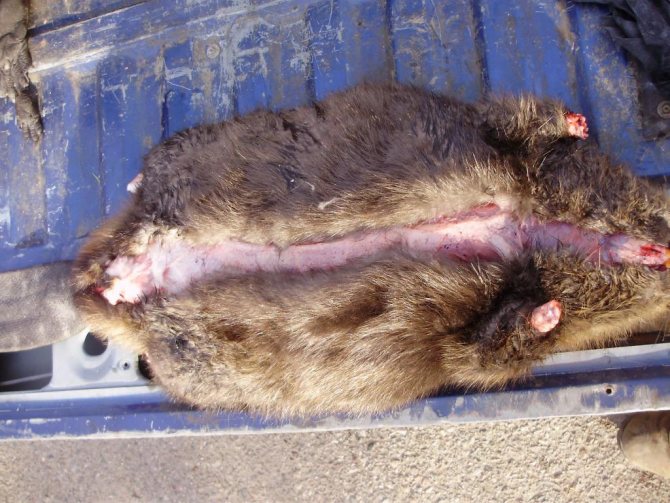
While the hunting season lasts, beavers are not dressed; people try to stuff as many animals as possible, the skins of which are removed, quickly salted and hidden rolled up in a hunting lodge or, even worse, frozen in the refrigerator. They do not cut up immediately, but after the end of the hunt, which often leads to loss of guard hairs during soaking. The number of procedures depends on the residues on the flesh. If there is a lot of meat left during the initial processing, then soaking is carried out twice.
Characteristics and evaluation of skins
On sale you can find different types of skins, which differ in cost and quality. They are divided by variety:
- First grade (winter). The fur is formed, thick, shiny, tall. The guard hairs are shiny, long, the undercoat is silky and dense.
- Second grade (late autumn). The fur is thick and shiny, but a small amount of old hairs may remain on the sides.
- Non-standard (spring, autumn, summer). Spring fur is dull, slightly thinning in the neck and scruff area. By the end of spring there are more obvious signs of fading and thinning. Summer skins are not valued; their fur is sparse and dull. By early autumn, the growth of new undercoat and renewal of the guard fur begins. The young fluff is just emerging. By the end of autumn, the fur acquires better quality, it grows by ½ and begins to shine, although there are still faded pieces in some places.

How to give the skin a “marketable appearance”
To prepare the skin for sale, after the measures described above, you will have to bring it to a marketable appearance. How much the fur will cost depends on the quality of preparation. The product must be soft, shiny, and pleasantly spread between the fingers when touched. To do this you need to do the following:
- sand the skin with fine sandpaper or an abrasive stone;
- remove residual fat by sprinkling with sawdust;
- comb the fur.
Afterwards, the skin can be sold or used for sewing hats, fur coats and other products. In production conditions, skins are often dyed and sheared, but it is better to do this with a professional approach.
Cost of tanning beaver skin
If it is not possible to process the workpiece at home, you can always take it to a specialized company. For dressing you will have to pay 900-2000 rubles, depending on the size of the skin. Skinning costs from 1,500 rubles, cutting the finished skin - from 200. If the product is damaged, you will have to pay more to have it repaired in the studio.
First solution
The average weight of the skin of this animal is approximately 1 kg. To soak it, take a container of at least 20 liters so that it is convenient to stir it from time to time. Since the skin was previously sprinkled with salt, it is no longer thrown into the liquid. You need to add any detergent. You can use washing powder and coarsely grated laundry soap; dish paste is also suitable. The calculation is carried out according to the following principle: 2 grams of the product are added to 1 liter of water.
The skin in the container is stirred quite often. If a longboat is used, then kneading is done every hour for 10 minutes. After 4 hours, the material is removed and wrung out. Then, using a two-handed scraper, they beat it well on a wooden block and flay it a little.
Second soaking during dressing
Often the second stage of soaking is carried out overnight, since the recommended time for soaking the material is 16 hours. The recipe for preparing beaver skin is as follows (per 1 liter of liquid):
- table salt - 20 g;
- formalin (or any antiseptic) - 1 g;
- powder - 1 g;
- acetic acid (70%) - 1.5 g (can be replaced with sodium sulfate - 1 g).
Acid is added to soften hardened pieces of meat. The temperature of the solution for the skin should be 30-35 degrees. The room should also be warm.
In the morning, the material is removed from the container and thoroughly wrung out, then proceed according to the model of the previous soaking. First they beat it with a scraper, and then cut off a small layer of fat and meat. If the skin has become soft and has taken on a “steamy” appearance, then the next step in preparing the skin will be fleshing.
Soaking the skin
The dressing of beaver skin has its own specifics.
According to the theory, you skin the skin and within 2 hours you do the initial fleshing, removing large cuts of meat and fat with a knife or other device. You can pickle it and stretch it over a rule and dry it faster. The faster you do this, the greater your chances that the skin will be in perfect order. In practice, it is not possible to do everything carefully; they remove the skin haphazardly, cover it with salt, roll it up and store it in a wet-salted state until dressing; sometimes the skin is frozen in the refrigerator. The dressing of beaver skins should be carried out in warm weather, preferably immediately, most often after several months, then such skins may experience hair loss or loss of guard hairs when soaked. If everything is fine, then you are lucky.
The beaver skin is oily and thick, and if there is a large amount of muscle deposits left on the flesh, then soaking the skin should be divided into two stages.
Soak 1.
Prepare the solution: for mechanical longboats LCD = 15, water temperature 30 - 35 degrees. For hand dressing in a container, FA = 20. We clean the skin of salt and weigh it, approximately a large beaver skin weighs 1 kg. According to the liquid coefficient, 20 liters of water are needed per 1 kg of skin weight; we deliberately take more water than for a longboat to better mix the skin in a container. Duration 3 – 4 hours. Usually the skins are dry-salted or wet-salted, so no salt is required. Any detergent: washing powder for hand washing 1 - 2 g/l (laundry soap, dish paste).
For these purposes, industry and home craftsmen use effective detergents and degreasers, for example, Effect M-composition based on nonionic surfactants. You can use any surfactant, both domestic and imported (gamma 1, gamma 2, gamma 3, syntanol DS, syntanol DT-308, sulfanol "Progress", lanem, tetramol, imported - neonol, savinol, water hass, Ferry, pelzwashmittel VNL, sintapon SR and others).
Stir the skin in the container often with a wooden spatula. In the longboat, 10 minutes of continuous stirring every hour. After 4 hours, we take out the skin, squeeze it out and beat it with a two-handed scraper on a block, and partially scrape it. In production, the skins are pressed in centrifuges. Most often, beaver skins require a second soak.
Soak 2.
After 4 hours, we change the solution to a new one: For longboats, LCD = 15, for manual LCD = 20. Temperature 30 - 35 degrees. Salts 20 g/l, any antiseptic - formalin 1 g/l, powder 1 g/l and 70% acetic acid 1.5 g/l (or sodium sulfite 1 g/l), acid and sulfite help soften keratinized meat, and surfactants for better watering. In production, gamma 1 and gamma 2 are used. The skin is often mixed. Duration 16 hours - usually left overnight in a warm room.
In the morning, check the skin for “pinch” and for watering; if everything is fine, then stop soaking; if you need to soak more, the period is increased. First, the skin is pulled out, squeezed out, then the flesh is broken on a block with a two-handed scraper, partially peeled and soaked again. The skin should be close to the steam room. Upon completion, the skin is pressed and fleshed.
Skin scraping
Before you tan a beaver skin at home, you need to carefully clean it on a flat or slightly convex surface. This could be a wooden block or board; some craftsmen have used an old car hood. It is advised to hold the device vertically so that the skin hangs on its own during fleshing from its own weight, then there will be no folds, and the processing process will be faster and better.
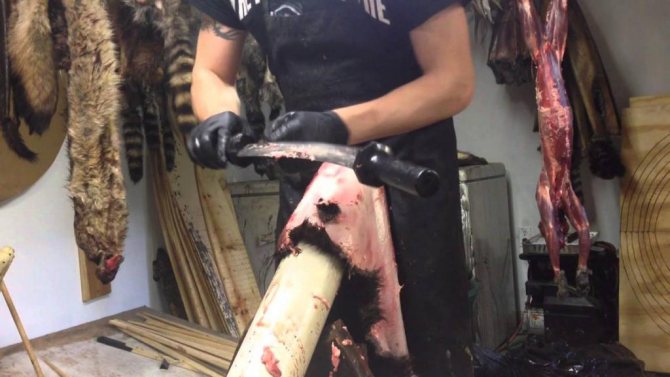
Always start scraping from the tail to the head if the movements of the scraper are vertical. If you work with a knife left and right, then the movement always starts from the back in different directions. The direction of movement must be one-way. There is especially a lot of fat on the side surfaces of the skin, so experienced craftsmen use a tricky technique: they sprinkle the skin, which is slippery with fat, with sawdust taken from non-resinous wood. They, like a sponge, absorb all excess from the skin. The last stage will be cutting off a thin layer of flesh on the back and withers, where its layer is especially thick (up to 5 mm). Avoid the appearance of a blue layer where the hair follicles are located. If it so happens that when working with a knife you cut off excess, then do not continue, as you can make a hole. This thin place bends neatly from the opposite side.
Before you tan a beaver skin, prepare several well-sharpened knives at once so as not to be distracted from the work during the process itself. Some craftsmen use a tablespoon for fleshing, with one edge sharpened. Fat immediately collects in it and does not stain the already treated surface.
cutting up a beaver carcass
1. Take the common beaver. We lay him on his back. 2. Make cuts along the hind legs, tail and front legs.
3. Then, carefully retracting the anus, we make an incision around it and connect it with the sub-tail incision.
4. Cut the skin along the white line of the belly. It is clearly visible if you make a cut slowly, pulling the skin to the top, inserting a knife between the skin and the carcass. We place the knife under the skin with the blade up, towards the skin. The most important thing in this operation is not the accuracy of the cut, but the integrity of the abdominal cavity; it is not advisable to cut or pierce it. Since the peritoneum is very thin, this operation must be done carefully.
5. Next, we pull back the edge of the skin and start shooting with small cuts with the tip of a knife. We make an incision at the color border (only under unfavorable lighting conditions this is not noticeable, in other cases the difference in the color of the skin and carcass is visible). We try to capture as little fat as possible. The skin from the belly is pulled off quite strongly and easily; the main thing here is not to rush and not to cut into large pieces. The remaining fat will still have to be removed later, otherwise it will spoil the presentation of the skin in the future.
6. If you don’t rush, all the fat remains on the carcass.
7. It is a little more difficult to separate the skin from the carcass in the tail area. A thick layer of fat gets in the way. This requires practice. Most likely, you won’t be able to shoot cleanly in this place the first time.
8. You will also have to tinker with the front paws. The subcutaneous layer of muscles from the back passes to the front paws; as a rule, hunters trim it, leaving it on the skin. With careful shooting this can be avoided. Another “trouble” of the front paws is that the veins come too close, which are easy to cut, which means blood will flow. This interferes and spoils the appearance.
9. When we have freed enough skin around the leg, you need to remove the skin from it through a circular cut.
10. We perform the same operation with the hind leg. There are no veins here, you can cut more boldly.
11. Everything seems to look easy, but in practice it is far from so; sometimes you have to adapt to each beaver.
12. Remove the skin from the side until it becomes necessary to turn the beaver onto its back. And while we stop, we move on to other operations.
13. When the skin on the sides is removed approximately to the middle, turn the beaver on its side. At the same time, we straighten the skin from the bottom under the beaver carcass, this will avoid contamination of both the skin and the meat.
14. Starting from the sides and further to the back, the red subcutaneous muscles are quite clearly distinguishable from the skin. But these muscles also stretch well along with the skin; haste will lead to the fact that meat will remain on the skin. By skinning the back, you can be less afraid of trimming it. On the ridge, the thickness of the skin can reach 0.5-0.8 mm!
15. Continuing to trim with small movements along the back, we “connect” with the other side.
16. We trim the eyes and ears at the base, trim the lips and nose as thinly as possible. If you know the skin will be used for your own needs, the skin can be cut off up to the ears, since there is an unused part left from the ears to the nose; in the future it is simply thrown away. So when shooting, you can save a little time on this.
17. Grass and soil should not come into contact with the flesh; if the flesh becomes clogged during filming, it should be washed in water (the blood will be washed off at the same time) for better future storage. At air temperatures above +5, storing the skin for more than 2-3 days in a rolled state is not recommended. For long-term storage, the skin should be broken on a board or salted.
18. For further cutting, I hang the beaver carcass from a tree by its tail. In this position, the tail serves as a small stop when cutting the carcass, and does not interfere, if necessary, with turning the carcass in any direction.
19. First of all, you need to VERY CAREFULLY cut out the beaver stream. A small splash of the contents of the stream will spoil the taste of the meat. This is the main reason why the taste of beaver meat is not liked by people who try it for the first time. Just don’t throw it away :) it’s a very useful thing.
20. You need to hold it by the edge of the anus, pulling it slightly, cut along the contour of everything with fat.
21. If you are afraid that the stream may get on the meat, do not do as I did, but cut out the stream with the wen in one large piece, hang it together with the fat on another tree, and then you can calmly remove the excess fat and separate the wen from the stream bags.
22. Having removed excess fat, we see: on top, reddish, soft sacs - these are fatty tissues. They can be used to prepare bait when catching beaver with a trap. Below: darker, harder - beaver stream.
23. Wen and jet have their own outlets from each sac at the base of the anus.
24. If the wen is removed, the jet sacs will look like two dark brown sacs joined together.
25. Having removed the stream, you can start cutting the carcass. If the skin is removed cleanly, without cuts, the subcutaneous muscles remain on the carcass. It is better to remove them; they are removed as a second “skin”, pulled back and trimmed away from the main carcass. Subcutaneous muscles, if cooked, are quite coarse and do not have decent taste; they are best used as dog food.
26. After removing the “unnecessary muscles,” we trim the peritoneum on the sides. We hold the entrails (intestines) and cut them off in places and let them fall out onto the ground. We do this so that the liver remains intact. The beaver has a liver with bile. If you are going to cook the liver as a snack in the future, the bile must be removed. Kidneys and heart can also be eaten.
27. Next, we remove the front and rear feet by joints.
28. If you're not crazy about beaver fat, you can remove it down to the meat.
29. We disconnect the front and hind legs from the carcass at the joints (if necessary, you can cut the meat from the bones).
30. Meat from the spine of your choice: either we cut it off the bones immediately, on the spot, or we divide it into pieces and take it home.
video on the topic from YouTube
Degreasing
If you used sawdust for degreasing, then after washing the skin you can start pickling immediately. If not, be sure to degrease it. This is done by simply washing the material using effective detergents. An old proven method: add washing powder to water at the rate of 2 grams per liter of water and soda ash (2 or 3 g/l). Nowadays, many people add Fairy-type dishwashing detergent or a thick paste.
The water should be warm, not lower than 35 degrees. The duration of washing with degreasers is half an hour, maximum 40 minutes. Some people use home washing machines, but only the activator type. After washing, the skin should be wrung out and rinsed thoroughly under running water.
Pickling
The dressing of beaver skins before pickling can be classified as preparatory work, since the main process is just beginning. Pickel is a solution containing acid and salt. Pickling is the process of processing skins prepared by fleshing using the specified solution.
Why is pickling done? The acid included in the solution acts on the free amino groups of proteins, as a result of which the fibers are loosened and the skin becomes elastic, plastic and stretches well in different directions. Checking the correct pickling is called stretching, when the skin can be easily stretched with your fingers.
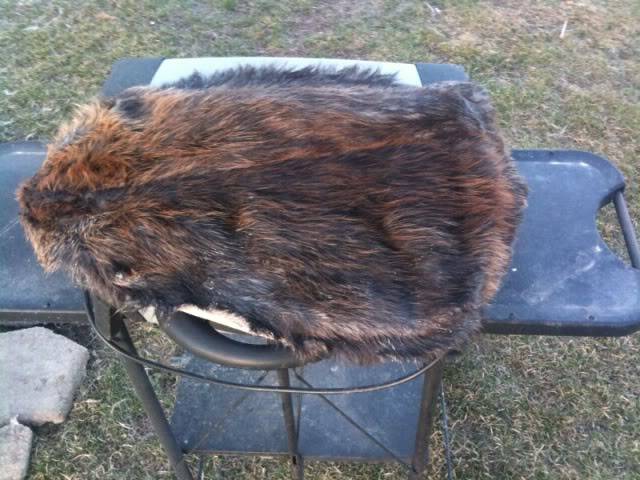
In the old days, this procedure involved fermentation with crushed grain or barley flour. Now this method is outdated, and is considered more expensive in terms of materials. Now craftsmen both at fur industry enterprises and when dressing beaver skins independently at home use various acids. You can take sulfur or vinegar, formic or milk. The latter are much more popular and, according to reviews from experts, give excellent results.
Dressing beaver skins in Moscow
True, at home it is difficult to compete with the capabilities of a well-functioning production facility, which not only properly processes and tans the fur, but also cuts or dyes it depending on the customer’s wishes.
It must be said that beaver fur has recently become increasingly popular. Previously, it was used only in men's clothing, since it is quite heavy and dense, but modern technologies make it possible to process beaver skins so that they become light and comfortable - suitable for women's clothing.
By the way, the fur from the abdominal part of a beaver carcass is especially valued in this regard - there it is much softer and at the same time denser than on the back and sides.
In general, this fur is characterized by high durability (it can be used for 18 seasons!), thickness that can protect against any cold, and beautiful shades, thanks to which outerwear has a luxurious look and goes well with other types of fur and fabrics.
In Moscow you can find many studios that are engaged not only in the professional dressing and preparation of skins for sewing outerwear, but also in the production of stuffed animals. Beavers are no exception here.
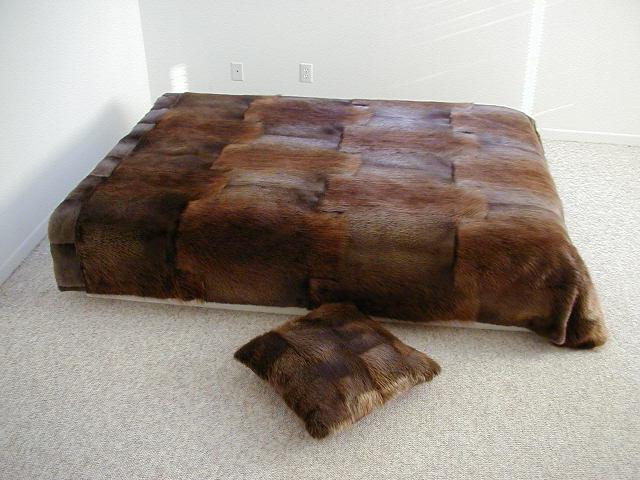
Composition of the solution
Pickling is carried out in a solution consisting of a mixture of 50 grams per liter of water of table salt and 5-7 grams of formic acid. If you take vinegar, then the concentration is greater - 12-15 g/l. The average liquid temperature ranges from 20 to 28 degrees. You need to keep the skin in this solution for 12 hours. Then they take it out and lay it out to rest. Some people advise keeping the skin in the pickel solution for a day. This is explained by the fact that during the first 12 hours the concentration of the acid decreases greatly; the rest of the time it will no longer have such an effect on the skin. If you keep the material in the pickle for a day, then you don’t have to lay it out for curing.
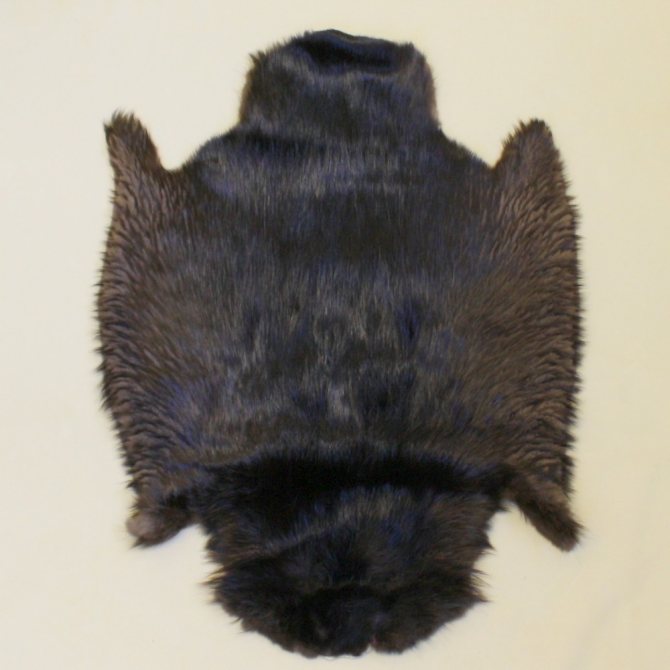
During the process, the skin must be turned over frequently and the solution itself must be stirred. Particular care must be taken with the fur, as it is weakly attached to the skin.
If you have a pH meter, you can check the acidity of the water with it. At the beginning of pickling, it should be equal to 2 units, with gradual absorption into the skin the acidity decreases, and when it reaches 2.8 or 3, the skin can be removed.
If you do not have a device that makes it easier to recognize the readiness of the product, then check the pickling by the appearance of “drying”. Usually it is expected after 14 hours. If you don’t feel it, then continue the process of soaking in acid. In industrial enterprises, this process is accelerated by special additives, for example, Gamma 2. This not only reduces pickling time, but also makes the skin of higher quality.
We continue to prepare for dressing: soaking
Tanning beaver skin at home takes more than one hour, which is why furatsilin and salt are added to the solution described above. They disinfect the liquid, preventing bacteria from multiplying in it, causing the process of rotting.
Detergent is an excellent component that helps clean the fur and flesh from all kinds of dirt and speed up the soaking process. By the way, you should also pay attention to the fact that the powder included in the solution does not contain biologically active substances, otherwise the process, on the contrary, will be delayed.
Remember that the soaking solution being prepared should be thoroughly mixed until the salt and furatsilin are completely dissolved, and only then can the skins be dipped into it. In order for them to soak thoroughly, you need to spend about 24 hours. True, sometimes this process lasts longer, then you need to prepare another solution for src=»https://autogear.ru/misc/i/gallery/11007/1107337.jpg» class=»aligncenter» width=»700″ height=”392″[/img]
Tracking and breakdown
How to further tan the beaver skin? After the pickle, the skin should lie for a day, then it should be wrung out by hand, but not twisted, and then kneaded. To do this, you need to slightly pull it in different directions, stretching it both in length and width. Some people beat the skins after curing using a scraper or a dead end.
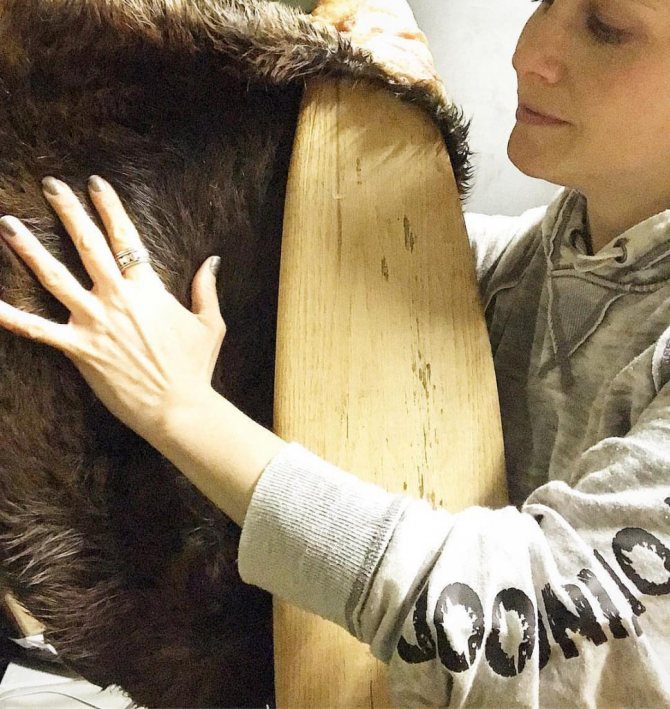
Excess acid on the skin must be neutralized before further action. To do this, place the skin in a baking soda solution for half an hour. Per liter of water you need to add 1 tsp. powder.
Tanning
If you skip tanning, the skin will be subject to changes from moisture or temperature, the skin may swell and wrinkle. Therefore, it should definitely be tanned with chrome. This substance is green (potassium) or white (sodium). The tanning solution is made warm. The water temperature should be 40 degrees. For 1 liter of water, add 5 grams of chromium and 50 grams of salt. Mix the liquid and leave the skin in the solution for 9 hours.
If the leather has acquired a uniform color, then tanning can be completed. The skin is pulled out of the container and laid out for 12 hours. Then rinse it under running water and wash the fur with shampoo. Additionally, coat the skin.
Tanning hides at home
Proper dressing will help make the skins comply with GOST, after which they can be sold or used independently. According to the requirements, they must have smooth, thick fur, soft fluff and intact coarse hair. After initial processing, you need to perform a rollback. To do this, the workpiece is rolled with the fur outward in a mixture of sawdust and alcohol (in equal parts), then knocked out from the sawdust, holes and cuts are sewn together.
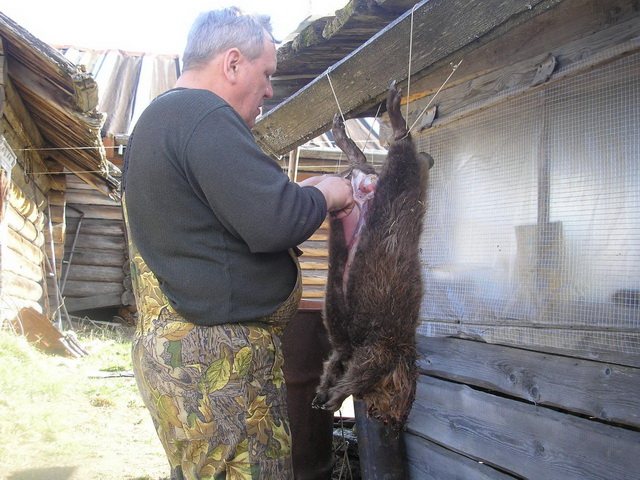
Pickling
This operation is very important, therefore it must be carried out strictly according to the instructions. It allows you to make the skin elastic, soft, but durable. Under the influence of acid and water, the product acquires a loose texture and easily accepts all further manipulations. For pickel, prepare the following solution (for each liter of water):
- 40-50 g salt;
- 8-10 g vinegar 70%.
Acetic acid is considered the safest. It is undesirable to use other acids, although sulfuric and hydrochloric acids, a mixture of lactic and formic acids can be used in extreme cases. Recommended water temperature is +35 degrees. The skin is placed in the solution and left for 24 hours. To speed up pickling, you can add 20 g of vinegar for each liter of water, then remove the product after 7 hours. But we must remember that the strength of the beaver skin decreases with such acceleration.

The readiness of the product can be judged by the appearance of sushina - a white mark after pressing with your fingers in the area of the fold of the flesh. In industry, special additives are also added to the solution, which reduce the pickling time and make the skin of higher quality. After this procedure, the skin is left to sit for 24 hours.
Breakdown and Neutralization
This stage of work is required to remove acid residue from the product. The skin is kneaded, stretched in length and width, then placed in a soda solution (a teaspoon of sodium bicarbonate per liter of water). The workpiece is kept in this solution for half an hour. Next, beat the skin on the deck.
Tanning
Tanning is also an obligatory step in the dressing of hides; it consolidates the results. The workpiece after tanning will be resistant to the influence of water and temperature changes. Chromium is best suited - potassium, sodium (green or white, respectively). Per liter of warm water take 4-5 g of tanning agent, 50 g of salt. The workpiece is placed there for 8 hours, but after 2 hours from the start of tanning, another liter of water with 2 grams of soda is poured in. Readiness is determined as follows: when cut, the skin turns blue (for green tanning agent). Next, the skin is laid out for 12 hours with the fur facing out, then washed again in water without additives and dried.
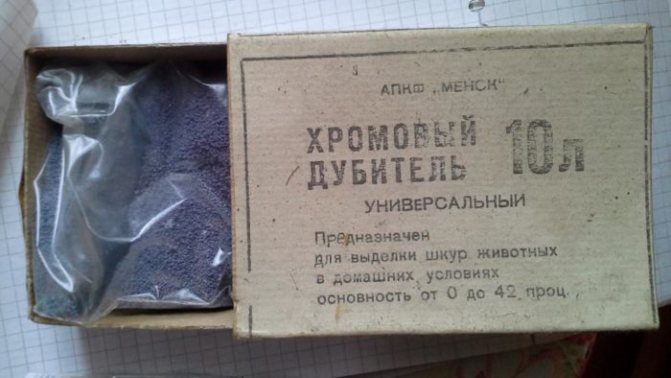
Fatliquoring and drying
For fatting, it is better to use special fat pastes (Effectol, Mehsinol) or prepare an emulsion with your own hands. You need to take transformer or spindle oil and laundry soap. Pour oil into the dishes, add about 5% of grated soap. Cook the mixture in a water bath until it resembles sour cream in texture.
Turn the dried skin over, skin side out, remove from the rule, knead, stretch well. Afterwards, apply the grease mixture onto it with a brush in a moderate amount. After 2 hours, hang the skin to dry completely in the air, knead it periodically. Drying time is at least 24 hours. Then the product must be kneaded again on a bracket, drum, or wooden grinder.
Fatliquoring
For elasticity, the skin must be coated with a special lubricant. It can be purchased ready-made, for example, “Mekhsinol” or “Effektol”, or you can make the lubricant yourself. The recipe is as follows:
- take transformer oil and laundry soap (5% of the weight of the oil);
- the soap is grated and mixed with the first component;
- The mixture is placed in a water bath and cooked until it reaches the consistency of sour cream at a temperature of 70 °C.
The skin is turned inside out and the skin is coated with lubricant. It should be well stretched over the rule.
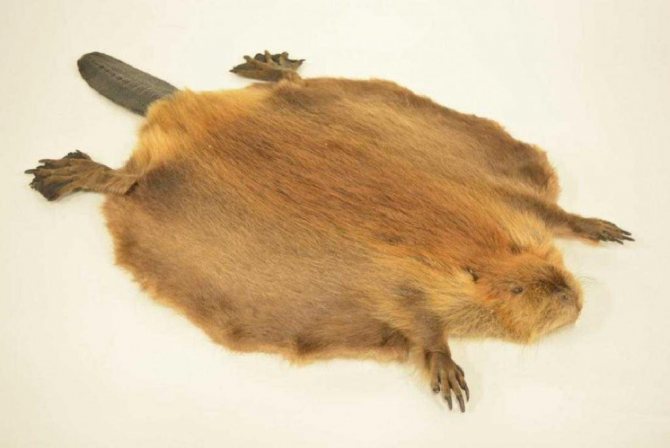
Now you know how to tan beaver skin at home. All that remains is to carefully knead it, roll it out or break it manually so that the skin becomes soft and elastic. At the end, the surface is sanded with sandpaper, and the fur is carefully combed or cut (optional).
Fatliquoring and drying
The recipe for preparing beaver skins also requires fattening. It is necessary to give the product elasticity. It is carried out using pastes and solutions, which you can prepare yourself. To do this, use transformer soap and laundry soap, which are boiled in a water bath until the consistency of sour cream is obtained.
The skins are straightened with the fur out, dried a little, and then turned over again with the fur down and they begin to knead and pull them. When the skin becomes dry, apply paste to it and continue to knead until the skins are completely dry.
